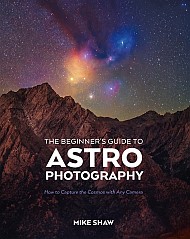Astronomy
Exploring PMS is a great idea, but The Period Brain can be simplistic
Why 'beauty factories' could solve two massive cosmological mysteries
Why 'beauty factories' could solve two massive cosmological mysteries
What might the humble house mouse be trying to tell us?
Why abandoning psychedelic research in the 1970s was a blow to science
What might the humble house mouse be trying to tell us?
Why abandoning psychedelic research in the 1970s was a blow to science
Two Bright Comets Converge on Northern Hemisphere Skies
After a dearth of bright comets earlier this year, we look forward to an exciting month ahead.
The post Two Bright Comets Converge on Northern Hemisphere Skies appeared first on Sky & Telescope.
First Treatment that Slows Huntington's Disease Comes after Years of Heartbreak
After years of heartbreak, researchers have found an experimental treatment that can slow the progression of Huntington’s disease, according to early results from a small clinical trial
James Webb Spots Intense Auroras on Nearby Rogue Planet
What can auroras on a rogue planet teach astronomers about planetary formation and evolution? This is what a recent study published in Astronomy & Astrophysics hopes to address as an international team of researchers investigated the atmospheric composition of a nearby rogue planet, including its atmospheric temperature and auroras. This study has the potential to help astronomers better understand rogue planets, along with additional planetary atmospheric formation and evolutionary traits.
Venus' Clouds Contain Aerosols That Are 60% Water, According To Reanalyzed Pioneer Data
Reanalyzing old data with our modern understanding seems to be in vogue lately. However, the implications of that reanalysis for some topics are more impactful than others. One of the most hotly debated topics of late in the astrobiological community has been whether or not life can exist on Venus - specifically in its cloud layers, some of which have some of the most Earth-like conditions anywhere in the solar system, at least in terms of pressure and temperature. A new paper from a team of American researchers have just added fuel to that debate by reanalyzing data from the Pioneer mission to Venus NASA launched in the 70s - and finding that the Venus’ clouds are primarily made out of water.
Autism may have subtypes that are genetically distinct from each other
Autism may have subtypes that are genetically distinct from each other
The mystery of highly reactive oxygen has finally been solved
The mystery of highly reactive oxygen has finally been solved
'We're precipitating an extermination rather than an extinction event'
'We're precipitating an extermination rather than an extinction event'
Spiral Arm Motion Solves Exoplanet Formation Mystery
There are plenty of exoplanets scattered throughout the galaxy, so it would stand to reason there are also plenty of stars that are in the process of forming new exoplanets. Tracking down stars that are in different stages of that process can shed light on the exoplanet formation process, and potentially even on how planets in our own solar system developed. But determining what star systems are going through that process, let alone where they are in the process itself, can be tricky. A new paper in Nature Astronomy from Tomohiro Yoshida and his co-authors at the National Astronomical Observatory of Japan and several other Japanese and American research institutions, seems to have found one that finally answers a mystery that has stood in planetary formation theory for decades - how do gas giant exoplanets form so far away from their stars?


